Instruction
Tom Watson releases ‘Lessons of a Lifetime II’ DVD
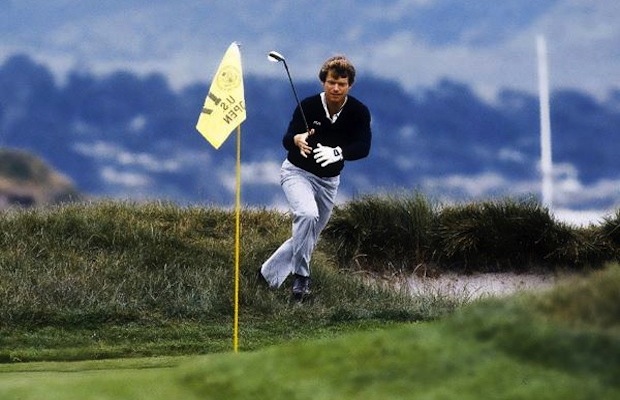
When a living golf legend chooses to offer his golfing knowledge, it’s decidedly best to accept.
Tom Watson, an eight-time major champion and member of the World Golf Hall of Fame, recently released Lessons of a Lifetime II, which introduces Disc Three to his Lessons of a Lifetime DVD anthology. While the first two discs in the series relay the fundamentals of the golf swing, the new addition provides golfers with 23 more advanced lessons including mental approach, handling pressure and practice techniques.
Lessons of a Lifetime, directed by Terry Jastrow, a seven-time Emmy Award winner, has sold over 70,000 units since its release in 2010, making it one of the best-selling instructional programs ever. It not only sells, but it works. In a survey of viewers from the first two discs, 88 percent of golfers said it helped improve their game. It has been sold globally in 40 countries and five languages including French, German, Japanese, Mandarin and English.
So what makes Watson want to share his extensive knowledge with the world?
“There’s a cloud over my head when I’m playing bad. Life isn’t as sweet. It’s a lot better when I’m playing well,” Watson told GolfWRX in a conference call. “If 10 percent of golfers improve from this, then I succeeded. I want to make you a better golfer.”
With positive feedback from the original release, Disc Three builds on the fundamentals established on the two-disc set, and includes even more stories from his golfing buddies.
Throughout the series, Watson consolidates knowledge that he’s soaked up from more of golf’s greatest minds including Jack Nicklaus, Gary Player, Byron Nelson, Tiger Woods, Ben Hogan, Sam Snead, his late caddy Bruce Edwards and his long-time teacher Stan Thirsk. He even has a lesson entitled “Tips from Tiger’s Dad.”
“I’ve plagiarized from others… and these are what I consider to be the fundamentals,” Watson said. “I’m narcissistic in the sense that these are the fundamentals that have worked for me.”
Watson has been a sponge around his all-star cast of friends over the course of his illustrious golfing career. According to Jastrow, he’s one of the smartest golfers ever, comprehensively understands the fundamentals of the game and articulates them with supreme simplicity.
Jastrow has it right. Watson breaks down seemingly every aspect of golf with an unbelievably easy to retain approach. He communicates complex moves, feelings and thoughts that are valuable to lower handicap golfers, in ways that the beginner can understand.
The combination of Jastrow’s direction and Watson’s mastery creates entertainment value and a natural flow of content that is top notch. Watson breaks down each concept with a verbal explanation and demonstration, using simple graphics (lines, circles and even virtual goalposts added in post-production) to increase understanding. He reviews key points as the series moves along and provides a checklist for every lesson.
Commonalities throughout Lessons of a Lifetime are his emphasis on setup, ball position and most importantly, grip pressure. Nicklaus was a proponent of similar notions, who was known to say that he could teach someone with a good setup and good grip, but a golfer with poor setup and a bad grip was unteachable.
Watson relayed a story from when he was having dinner with Nicklaus the night before the final round at Turnberry during the 1986 British Open. Nicklaus called Greg Norman over to their table and told him, “Just be careful of your grip pressure tomorrow.” Norman went on to win the tournament, and Nicklaus’ advice illustrates that even the world’s top players should concern themselves with how they grip the club.
“Bad grip and poor fundamentals are more likely to fail under pressure than a good grip and good fundamentals,” Watson said.
To explain phenomenons like Bubba Watson, he tells golfers to “Do as I say, not as I do. His swing may work for him, but probably not for anyone else.”
Some of the lessons in the series delve deeper and display how the body and mind should work through the swing. In Disc One, he introduced what he believes to be “The Secret,” which simplifies how the shoulders work around a plane. His knowledge of this “secret” originally began when he analyzed Corey Pavin’s swing and pre-shot rehearsals.
In the newly released Disc Three, he delivers a sequel to “the secret” in a lesson named “The Secret: #2: Keeping the Hip ‘Crease’ at impact.” It’s an original take on a concept that others before him have tried to explain.
“No one has talked about hip crease before.” Watson said. “It’s a different way of thinking that may be easier to understand. It’s sometimes hard to take words and put them into action, but it helps getting you to your left side and creating acceleration.”
On the DVD, he shows how the “hip crease” maintains stabilization of the body throughout the swing and produces power and solid contact.
As for how amateurs can improve their equipment setup (WRX members ears perk up), Watson said in the interview, “A 60-degree (wedge) shouldn’t be in most people’s bag. It’s too difficult to control distance and takes too much skill.”
He also suggests that players opt for more loft in the driver, play the ball farther forward in their stance and add more hybrids to their bag. He admits himself that he will be gaming four or five hybrids in the near future, recognizing that his status as a “super senior” is approaching.
With inherent and professional ties into the golf industry, Watson also tackled issues facing the recent decrease in the population of golfers. He believes that the golf hole should double in size for the sake of overall enjoyment, but doesn’t think it will translate to more people playing golf. The biggest problem, according to Watson, is that golf has to compete with smart phones and instant communication.
An 18-hole round of golf may simply take too long. Nicklaus has been experimenting with 12-hole golf courses, but Watson says nine, six, or even three holes would be sufficient for people to get the golfing experience.
Another popular topic in current events among golfers is the use of Trackman. How does Watson, who preaches fundamentals, feel about the widespread usage of the technology? “I’m skeptical,” said Watson. “How accurate is it? How do you figure out how far the ball went? Maybe through mathematics. The way I use Trackman is to look at the numbers when I hit a perfect shot. Then wait until I hit another perfect shot and compare the numbers to 100 percent confirm it. That’s how you should use Trackman. You have to tell Trackman when you hit a good shot.”
Golfers and teachers across the world are accepting Trackman and similar technologies into their preparation and practice routines. Numbers, angles of attack, speeds and spin rates are useful to hone the swing and equipment, but fundamentals are the heart of a golf game. That’s where Tom Watson thrives.
The MSRP is $49.95 for the entire anthology of Lessons of a Lifetime, which includes all three discs and a 20-page booklet. If you want to purchase the third disc individually, it sells on retail for $24.95 with a four-page booklet. You can buy either, or both, at www.tomwatson.com or on Amazon.
As Watson puts it, life is sweeter when you play well. There’s no better way to learn the game, or improve on bad habits, than a comprehensive look into the knowledge that a living golf legend has acquired over his career.
- LIKE2
- LEGIT0
- WOW0
- LOL0
- IDHT0
- FLOP1
- OB0
- SHANK0
Instruction
Clement: Laid-off or perfect fade? Across-the-line or perfect draw?

Some call the image on the left laid off, but if you are hitting a fade, this could be a perfect backswing for it! Same for across the line for a draw! Stop racking your brain with perceived mistakes and simply match backswing to shot shape!
- LIKE0
- LEGIT0
- WOW0
- LOL0
- IDHT0
- FLOP0
- OB0
- SHANK1
Instruction
The Wedge Guy: The easiest-to-learn golf basic

My golf learning began with this simple fact – if you don’t have a fundamentally sound hold on the golf club, it is practically impossible for your body to execute a fundamentally sound golf swing. I’m still a big believer that the golf swing is much easier to execute if you begin with the proper hold on the club.
As you might imagine, I come into contact with hundreds of golfers of all skill levels. And it is very rare to see a good player with a bad hold on the golf club. There are some exceptions, for sure, but they are very few and very far between, and they typically have beat so many balls with their poor grip that they’ve found a way to work around it.
The reality of biophysics is that the body moves only in certain ways – and the particulars of the way you hold the golf club can totally prevent a sound swing motion that allows the club to release properly through the impact zone. The wonderful thing is that anyone can learn how to put a fundamentally sound hold on the golf club, and you can practice it anywhere your hands are not otherwise engaged, like watching TV or just sitting and relaxing.
Whether you prefer an overlap, interlock or full-finger (not baseball!) grip on the club, the same fundamentals apply. Here are the major grip faults I see most often, in the order of the frequency:
Mis-aligned hands
By this I mean that the palms of the two hands are not parallel to each other. Too many golfers have a weak left hand and strong right, or vice versa. The easiest way to learn how to hold the club with your palms aligned properly is to grip a plain wooden ruler or yardstick. It forces the hands to align properly and shows you how that feels. If you grip and re-grip a yardstick several times, then grip a club, you’ll see that the learning curve is almost immediate.
The position of the grip in the upper/left hand
I also observe many golfers who have the butt of the grip too far into the heel pad of the upper hand (the left hand for right-handed players). It’s amazing how much easier it is to release the club through the ball if even 1/4-1/2″ of the butt is beyond the left heel pad. Try this yourself to see what I mean. Swing the club freely with just your left hand and notice the difference in its release from when you hold it at the end of the grip, versus gripping down even a half inch.
To help you really understand how this works, go to the range and hit shots with your five-iron gripped down a full inch to make the club the same length as your seven-iron. You will probably see an amazing shot shape difference, and likely not see as much distance loss as you would expect.
Too much lower (right) hand on the club
It seems like almost all golfers of 8-10 handicap or higher have the club too far into the palm of the lower hand, because that feels “good” if you are trying to control the path of the clubhead to the ball. But the golf swing is not an effort to hit at the ball – it is a swing of the club. The proper hold on the club has the grip underneath the pad at the base of the fingers. This will likely feel “weak” to you — like you cannot control the club like that. EXACTLY. You should not be trying to control the club with your lower/master hand.
Gripping too tightly
Nearly all golfers hold the club too tightly, which tenses up the forearms and prevents a proper release of the club through impact. In order for the club to move back and through properly, you must feel that the club is controlled by the last three fingers of the upper hand, and the middle two fingers of the lower hand. If you engage your thumbs and forefingers in “holding” the club, the result will almost always be a grip that is too tight. Try this for yourself. Hold the club in your upper hand only, and squeeze firmly with just the last three fingers, with the forefinger and thumb off the club entirely. You have good control, but your forearms are not tense. Then begin to squeeze down with your thumb and forefinger and observe the tensing of the entire forearm. This is the way we are made, so the key to preventing tenseness in the arms is to hold the club very lightly with the “pinchers” — the thumbs and forefingers.
So, those are what I believe are the four fundamentals of a good grip. Anyone can learn them in their home or office very quickly. There is no easier way to improve your ball striking consistency and add distance than giving more attention to the way you hold the golf club.
More from the Wedge Guy
- The Wedge Guy: Golf mastery begins with your wedge game
- The Wedge Guy: Why golf is 20 times harder than brain surgery
- The Wedge Guy: Musings on the golf ball rollback
- LIKE86
- LEGIT13
- WOW6
- LOL1
- IDHT0
- FLOP4
- OB1
- SHANK8
Instruction
Clement: Stop ripping off your swing with this drill!

Not the dreaded headcover under the armpit drill! As if your body is defective and can’t function by itself! Have you seen how incredible the human machine is with all the incredible feats of agility all kinds of athletes are accomplishing? You think your body is so defective (the good Lord is laughing his head off at you) that it needs a headcover tucked under the armpit so you can swing like T-Rex?
- LIKE0
- LEGIT2
- WOW2
- LOL0
- IDHT0
- FLOP0
- OB0
- SHANK2
-

 19th Hole2 weeks ago
19th Hole2 weeks agoDave Portnoy places monstrous outright bet for the 2024 Masters
-

 19th Hole3 days ago
19th Hole3 days agoJustin Thomas on the equipment choice of Scottie Scheffler that he thinks is ‘weird’
-

 19th Hole2 weeks ago
19th Hole2 weeks agoTiger Woods arrives at 2024 Masters equipped with a putter that may surprise you
-

 19th Hole3 days ago
19th Hole3 days ago‘Absolutely crazy’ – Major champ lays into Patrick Cantlay over his decision on final hole of RBC Heritage
-

 19th Hole2 weeks ago
19th Hole2 weeks agoTwo star names reportedly blanked Jon Rahm all week at the Masters
-

 19th Hole1 week ago
19th Hole1 week agoReport: LIV Golf identifies latest star name they hope to sign to breakaway tour
-

 19th Hole1 week ago
19th Hole1 week agoNeal Shipley presser ends in awkward fashion after reporter claims Tiger handed him note on 8th fairway
-

 19th Hole1 week ago
19th Hole1 week agoBrandel Chamblee has ‘no doubt’ who started the McIlroy/LIV rumor and why

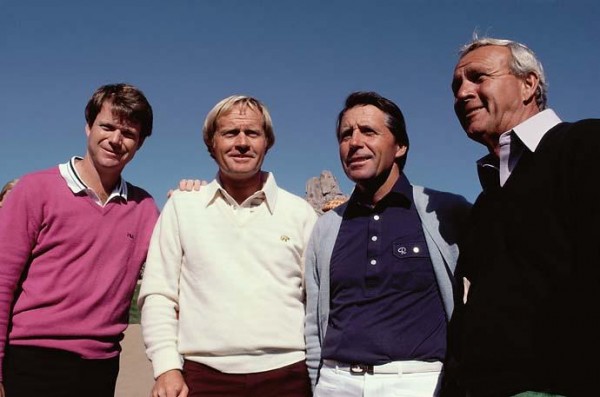
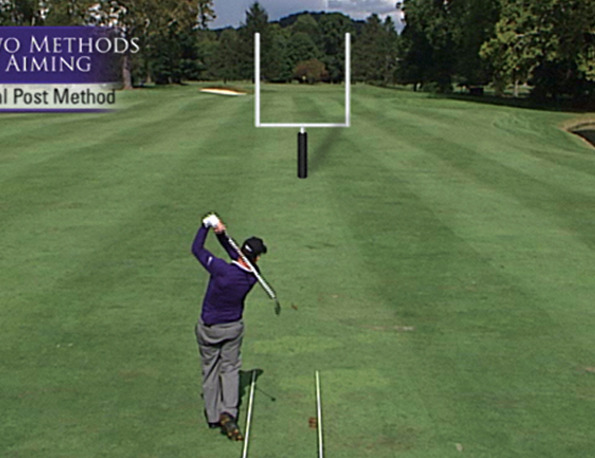
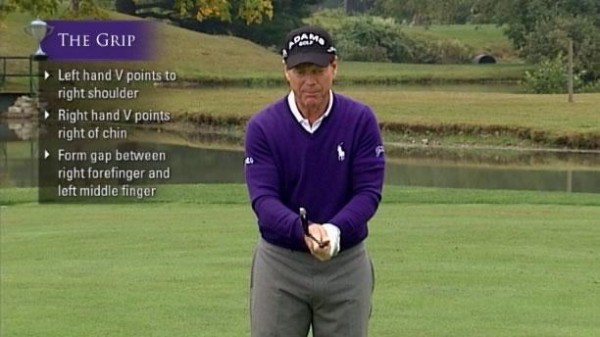
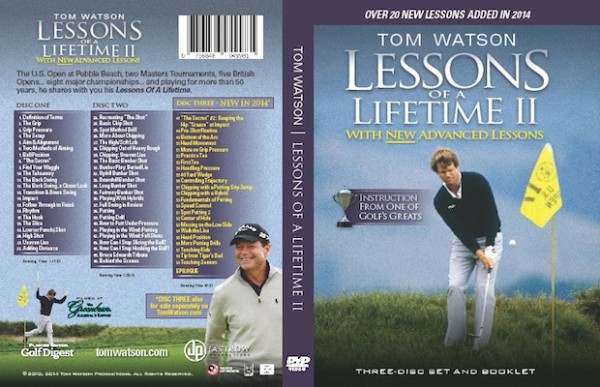















Minh Nguyen
May 10, 2014 at 10:45 am
Andrew, do you know why most, if not all instructional videos come only in a DVD format with no Blu-ray option?
I’ve thought if buying Mr. Watson videos, Hank Haney, and Burch Harmon. However, the DVD format is holding me back. Assuming you have a HDTV, how bad/good is the picture quality?
Thanks.